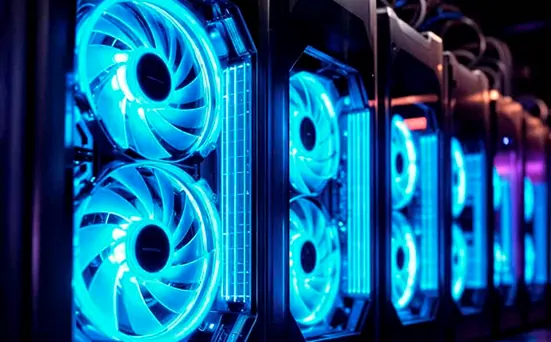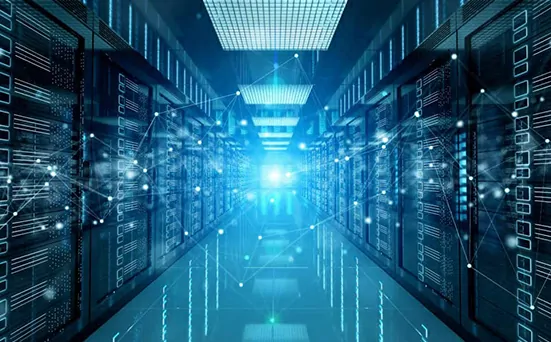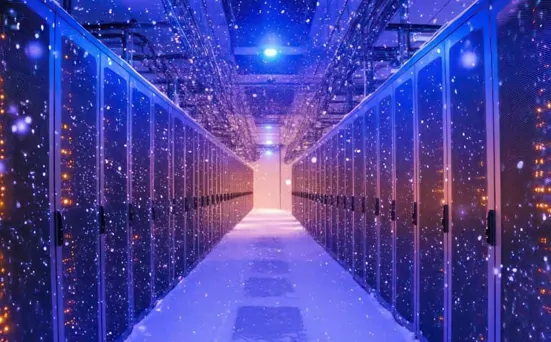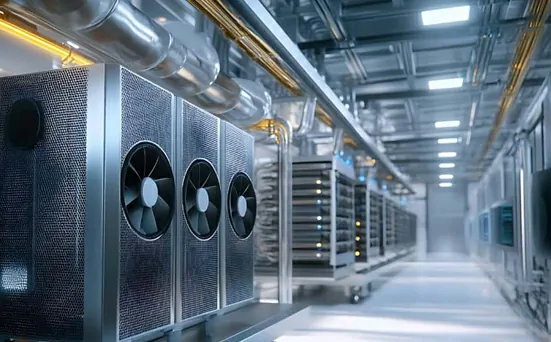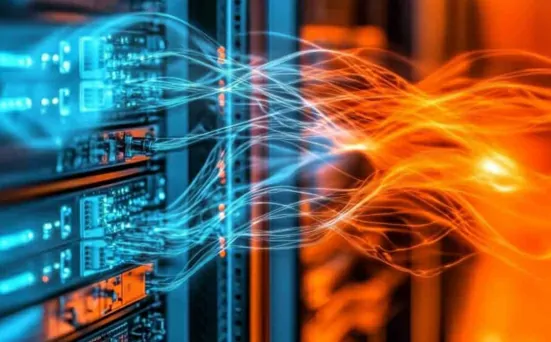June 3, 2025
Cutting Edge Access: How Edge Data Centers Power America
In 2025, a farmer in Iowa can monitor crop conditions using AI-powered sensors with the same real-time precision a Wall Street trader can analyze market data.
This kind of universal computing access is possible because data centers are no longer confined to distant locations. Instead, edge data centers — local, fast, and ready facilities — have brought what was once considered “the edge” closer than ever before. The impact is so profound that by 2030, edge computing is expected to overtake centralized data centers as the dominant hub for data processing.
Metropolitan Areas: Fueling the Rise of Edge Data Centers
According to the U.S. Census Bureau, in 2024, nearly 294 million Americans (about 86.4% of the U.S. population) lived in metropolitan areas. This massive concentration of people, devices, and digital demand created intense pressure on data infrastructure. As millions stream, video chat, game, and use connected services simultaneously, the result is often delays, network bottlenecks, and poor user experiences that impact both satisfaction and productivity.
To meet the need for reduced latency and reliable computing access to millions of users, edge data centers emerged — smaller, strategically located facilities positioned closer to the communities they serve, often outside major geographic hubs. With this setup, data requests no longer need to travel long distances to centralized facilities. Instead, localized edge hubs connect to larger data centers or other edge sites, enabling data to be processed and delivered directly within the communities they support, reducing delays and improving efficiency.
Why does that matter in metro areas?
Bringing computing power closer to end users provides several critical advantages:
- Reduced latency: With less distance for data to travel, edge data centers deliver faster response times. This enables real-time, personalized digital interactions that modern users expect.
- Improved data transfer efficiency: Localized data handling reduces the strain on core networks and improves bandwidth usage, which is especially important for high-traffic applications like video conferencing and live streaming.
- Scalability without disruption: Edge facilities can be deployed incrementally, allowing service providers to scale with demand without requiring major investments in centralized infrastructure.
- Increased reliability: Distributed processing provides built-in redundancy. Even if a central data center experiences issues, localized edge centers can maintain service continuity and reduce downtime.
- Public safety benefits: In urban environments, edge computing enables real-time analysis of surveillance footage and sensor data, which helps law enforcement and emergency services respond faster and more effectively.
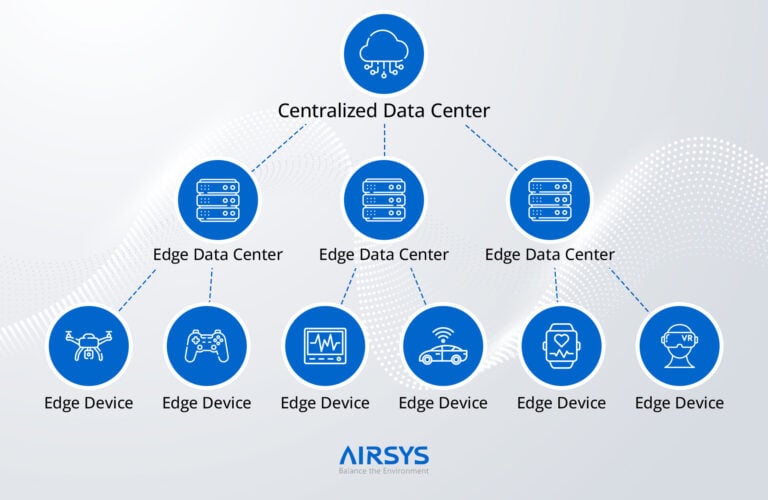
Reaching the Unreached: Empowering Rural America
While metropolitan areas drove the initial rise of edge data centers, rural America represents their most transformative potential. In places where healthcare, education, and job opportunities are often out of reach due to distance or infrastructure limitations, edge data centers help level the playing field.
Unlike in urban areas, where edge computing primarily enhances speed and convenience, in rural communities, it creates entirely new capabilities. Healthcare providers can offer real-time consultations and remote monitoring where specialists are hours away. Students gain access to advanced educational tools and virtual classrooms once limited by poor connectivity. Farmers use precision agriculture to monitor crops and optimize yields. Small businesses can tap into global markets with access to enterprise-level tools once reserved for large urban firms.
In regions where power grids and connectivity can be unreliable, edge data centers bridge the digital divide, ensuring critical services remain uninterrupted. By reducing dependence on distant infrastructure, edge centers empower rural communities with consistent access to the tools they need to thrive.
Where Edge Data Centers Make the Biggest Difference
Edge data centers are reshaping entire industries by bringing computing power closer to where data is generated. Here are some of the sectors where edge data centers deliver the greatest impact:
Healthcare
Edge data centers bring advanced medical services closer to patients. Whether for telemedicine, real-time diagnostics, robotic surgeries, or immediate access to first responders, edge technology ensures low latency and dependable connectivity, which is crucial for both routine and emergency care.
Education
Edge computing transforms educational access through virtual classrooms, interactive laboratories, AI-powered tutoring systems, and real-time collaboration tools, regardless of location. Thanks to reliable computing power, students and educators benefit from a more reliable, interactive, and conducive learning experience, especially in underserved areas.
Financial Services
In an industry where milliseconds determine millions in profit or loss, edge data centers provide the critical speed advantage. Real-time market analysis, instant transaction processing, and automated trading systems all depend on localized computing power that eliminates delays. Banking services, too, leverage edge computing to execute trades faster and optimize investment strategies, improving both user experience and potential revenues.
Manufacturing
As more industrial facilities expand beyond urban centers, edge data centers enable the shift to smart manufacturing. By supporting real-time equipment monitoring, predictive maintenance, and automated process optimization, edge computing helps reduce downtime, improve workplace safety, and maximize efficiency across complex production environments.
Transportation
Edge computing enables autonomous vehicles to analyze road conditions, detect obstacles, and coordinate with other vehicles in real-time. Smart traffic management systems also depend on edge infrastructure to optimize signal timing, reduce congestion, and respond immediately to accidents or changing conditions.
How AIRSYS Powers the Edge
Suppose forecasts prove accurate, and more than half of all data will soon be processed in edge data centers. In that case, billions of users across metropolitan and rural communities will depend on these facilities for data delivery. This reality leaves no room for compromise in data center cooling.
With smaller footprints and potentially high-density workloads, edge data centers demand specialized cooling solutions. With that in mind, cooling solutions for edge data centers often employ advanced methods such as in-row cooling, liquid cooling, or free cooling, and are designed for space optimization, flexible cooling capacities, and sustainability.
AIRSYS understands these unique demands and engineers advanced, energy-efficient cooling systems specifically for edge environments. For instance, our UniCool-Edge™ system is purpose-built to meet the evolving needs of edge data centers:
- UniCool-Edge incorporates free cooling technology, reducing operational costs and environmental impact.
- The modular design supports scalable growth, accommodating cooling needs from 7kW to 240kW.
- Space-efficient stackable architecture increases cooling capacity without requiring additional floor space.
- Horizontal airflow optimization ensures seamless integration with hot and cold aisle configurations, maximizing efficiency.
- Green cooling technologies and energy-saving design minimize the environmental footprint.
Ready to Power Your Edge Infrastructure?
From metropolitan hubs to rural communities, millions rely on edge data centers, and those data centers rely on consistent, efficient cooling. That’s where AIRSYS comes in. With decades of expertise and a commitment to innovation, AIRSYS provides reliable, sustainable cooling solutions tailored to edge data centers of all sizes and locations. Contact us today to discover how our advanced cooling systems can support your edge data center operations.






